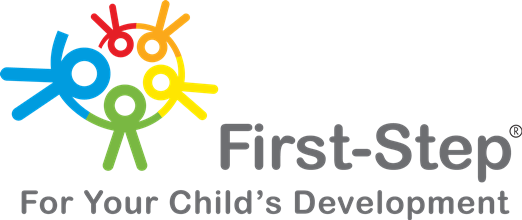
First Step Diagnosis
How does a First Step diagnosis differ from other diagnostic methods?
We’re often asked about the differences between the First Step diagnostic method and other diagnoses – particularly physical therapy. Do bear in mind that parents need to choose the method that’s most appropriate for them. Also, the differences noted here do not rule out other diagnostic methods, and are intended to highlight First Step’s specific, unique perception.
The importance of the sensory system
Most diagnostic methods examine the baby’s motor system, and his or her skeletal and muscle systems. A First Step diagnosis identifies a substantive connection between development and the sensory system.
The importance of the human environment, the family, and interaction with the parent
A First Step diagnosis provides an observation of the relationship with the environment, particularly with the parents – it is another key to understanding the baby’s developmental situation and how it can be changed.
The importance of the physical environment in which the baby grows
Part of the First Step diagnosis is understanding how aspects in the baby’s environment have significant impact on his development. The baby can be born with the full potential for proper development – but incorrect behavior by his parents or exposure to an environment that doesn’t suit him (for example: sitting too long in a baby-seat) can create gradual harm, which ultimately creates a major problem.
Identifying these environmental data, is also the key to improving and removing the problem.
What happens following a First Step diagnosis?
- We may recommend taking part in a workshop for developmental support.
Some babies’ diagnoses show that they need continuing work in a developmental aspect. - This can be provided in a group structure, and that framework is often preferable for them.
- We may recommend taking private lessons.
- We may recommend participation in five to ten private lessons.
- No further treatment or follow-up is needed
What does a private lesson in the First Step method consist of?
The lesson must be an enjoyable process, in which most of the learning takes place through play, in optimal conditions for learning.
Private lessons are individual meetings – where the participants are the parents, the baby, and the instructor.
It’s a learning experience, and that’s why we call it a lesson.
What does a private lesson in the First Step method consist of?
Private lessons are individual meetings – where the participants are the parents, the baby, and the instructor. It’s a learning experience, and that’s why we call it a lesson.
We believe there’s no such thing as “a baby with a problem” – only a baby who “hasn’t learnt “ what he “has to learn” at a specific developmental stage.
Parents often ask us “to treat the baby’s problem”. In our perception, treatment is an attempt to “perform a repair” rather than a lesson where the starting-point is the assumption that the baby doesn’t know – so we offer the baby an environment and stimuli that will help him learn, or to reconstruct a previous stage in developmental learning.
A First Step lesson is set in surroundings that are warm, comfy, and relaxing – for the parents and particularly for the baby. We know that when a baby isn’t relaxed, he won’t be able to learn. So the lesson must be an enjoyable process, in which most of the learning takes place through play, in optimal conditions for learning.
Important! If a baby cries and fusses during the lesson, s/he won’t be able to learn.
Home Exercise for Parents and Babies
How long should parents practice the home exercises?
We recommend practicing at least once a day for 15 to 30 minutes, and the minimum for effective practice is three times a week.
In fact you can practice without restriction, as long as baby cooperates and is having fun.
While there’s no such thing as “too much” practicing, baby must be willing to take part and should show that the practice is enjoyable.
There are no limitations on the practice exercises, because we base them on the natural development of infants.
How long does it take until improvement is noticeable?
The answer depends on the progress made by baby and the amount of practice that you do at home.
Sometimes a major improvement is visible after one meeting, and in other cases improvement is seen gradually. For example:
A10 month old baby who came for a lesson because he was not crawling. The diagnosis revealed the problems – the baby was not ready to grasp his feet, and he also found it hard to hold objects while lying on his back. We know that crawling is made up of prior stages – one of which is grasping.
After one lesson, we see an improvement in grasping objects – and this is a significant improvement towards proper crawling, even if actually happens some weeks later.
Lessons at First Step help babies relearn developmental functions that they did not achieve previously, and to reacquire components that will allow the “higher” function to be fulfilled.
